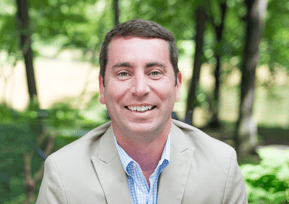NALP’S Role in Developing Pesticides Regulations
Each landscaper develops their own safety practices as they develop their careers. There are several influencing factors, including area of expertise, management teams, geographic location, and experience level. There are safety standards that are consistent industry wide though, and these are often regulated by industry and governmental leadership. Andrew Bray is a key player in developing that regulation.
 Andrew is the NALP’s Vice President of Government Relations and serves as the middleman between the EPA and thousands of landscape professionals. He started his long career as a landscaper in high school and college, but then earned his law degree after undergraduate school. He grew up in the nation’s capital and was always interested in government lobbying. Andrew worked in government relations for different trade associations, then helped with several political campaigns, and even launched a short career as a criminal attorney. Finally, he returned to his roots with hopes of improving the industry he loves.
Andrew is the NALP’s Vice President of Government Relations and serves as the middleman between the EPA and thousands of landscape professionals. He started his long career as a landscaper in high school and college, but then earned his law degree after undergraduate school. He grew up in the nation’s capital and was always interested in government lobbying. Andrew worked in government relations for different trade associations, then helped with several political campaigns, and even launched a short career as a criminal attorney. Finally, he returned to his roots with hopes of improving the industry he loves.
“Government relations are incredibly important. The NALP does a multitude of things including education, community building, hosting events and meetings, and producing a multitude of other resources,” he says. “But advocacy and government relations are a huge part of our organization.”
.png?width=1714&height=1180&name=Andrew%20Bray%20(6).png) Demonstrating Product Uses to EPA Staff
Demonstrating Product Uses to EPA Staff
Andrew works with government agencies like OSHA and the EPA to develop and approve new industry tools. He explains why landscapers need certain products, how often they are used, and the overall benefits they can have for a landscape or ecosystem. Andrew then helps develop safety resources that educate landscapers on researcher’s recommendations. Things like health warnings in product labels and user manuals. He says education is critical to keeping people safe.
"Nine times out of ten when something bad happens in the workplace, those actions were very preventable.
It is because someone did not understand what they're doing or they moved too fast through training."
“We're putting in place best management practices to make sure people are using things responsibly, not only to protect themselves, to protect their customers and the environment,” says Andrew
.png?width=316&height=210&name=Andrew%20Bray%20(2).png) A large part of Andrew’s job focuses is on pesticide safety and the process of getting them on the market. He says there are three key stakeholders playing a part in the pesticide approval process: the EPA, the company trying to register the products, and those using the products. The NALP operates on behalf of the product users.
A large part of Andrew’s job focuses is on pesticide safety and the process of getting them on the market. He says there are three key stakeholders playing a part in the pesticide approval process: the EPA, the company trying to register the products, and those using the products. The NALP operates on behalf of the product users.
A majority of pesticide research in the United States focuses on agriculture industries, which are responsible for more than half of the product use. Andrew says many pesticides only have harmful potential when they are not used in compliance with the EPA approved label, which is why landscape representation is critical to help inform EPA on how to label each product properly. The NALP assists EPA on how a pesticide is being used in landscapes and why they help the industry.
.png?width=1654&height=1084&name=Andrew%20Bray%20(5).png) EPA Field Trip
EPA Field Trip
“We often explain the benefit of these products to the EPA when there's not a viable alternative or there's a threat to the environment. For example, there is nothing else that kills white grubs as effectively as a pesticide. They will tear up a lawn, which impacts carbon sequestration and water filtration, which is bad for an ecosystem. I think the connotation that pesticides are worse for the environment than the actual pests, is completely off.”
.png?width=1762&height=1166&name=Andrew%20Bray%20(4).png)
.png?width=1654&height=1180&name=Andrew%20Bray%20(1).png)
Andrew says it takes months of work, sometimes costing up to $80 million, just to get one pesticide product approved. Scientists with the Environmental Protection Agency must review voluminous peer reviewed studies that explain how pesticides work and the impacts they may have on human health or the environment. They also gather information from industry representatives, like Andrew, to learn the context and necessity of the chemicals under-review. Once federal regulators approve a product, state groups have the chance to do the same.
“Many people think that pesticides are just rubber stamped through an easy process, but that is quite the contrary. Whenever a pesticide is approved, there is a lot of data supporting that it will not harm human health or the environment when used in accordance with the EPA approved label. That is why we need to continue to educate the industry and the public that pesticides both synthetic and other non-synthetic tools, when used in a responsible manner, are appropriate.”
Andrew recognizes that many companies and their clients will fundamentally disapprove of pesticide use and encourages people to research ways to safely utilize pesticides. He says it is why he and his colleagues at the NALP ensure safety resources are available to government representatives and landscape professionals.
"We protect & maintain healthy green spaces for you, your family, your businesses, whatever it may be.
These spaces have tremendous benefits.
We're benefiting society & the environment with the way we do our work."
.png?width=1766&height=1172&name=Andrew%20Bray%20(8).png)
.png?width=1728&height=1104&name=Andrew%20Bray%20(9).png)

2023 Taking Root Scholarship Awarded
Arborjet | Ecologel is pleased to announce that it has awarded the 2023 Taking Root Scholarship. Now in its tenth consecutive year, the program...
 Read More
Read More


 Mary Kate Carson
Mary Kate Carson
.png)